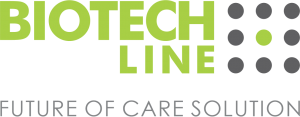Report Overview
The global hemostasis & tissue sealing agents market size was valued at USD 6.13 billion in 2021 and is anticipated to expand at a compound annual growth rate (CAGR) of 8.8% during the forecast period. Hemostats and sealants are medical devices that cease bleeding and hemorrhage caused by injuries and surgical procedures. The market is expected to witness lucrative growth over the next seven years owing to increased demand supported by the rising surgery volumes. Growth in the geriatric population and the high prevalence of chronic conditions are among the key drivers of the market. As per the Centers for Disease Control and Prevention (CDC) statistics, over 45% of the American population suffers from at least one chronic condition requiring critical care.
 To learn more about this report, request a free sample copy.
To learn more about this report, request a free sample copy.
Geriatric patients require critical care and are prone to injuries and wounds that take much time to heal. With an increasing demographic tilt toward an active lifestyle, the cases of common injuries and damages are rising, which is expected to drive market growth. Chronic diseases ultimately lead to surgical procedures being performed on the patient, which, in turn, boosts growth. Hernia fixation, diabetes, spinal injuries, ophthalmic injuries and replacements, urological disorders, and burns are a few chronic conditions requiring these products. The spread of the COVID-19 virus had a significant effect on the market.
The coronavirus causes thrombotic bleeding and complications, a major cause of fatality among patients that are infected by the virus. The market grew with the increasing importance of unbalanced hemostasis in COVID-19 patients favoring a prothrombotic state. The rising instances of hemostatic anomalies in the impacted people and their effect on prognosis positively affected the market growth. Critical illness, bleeding, death, and thrombosis among patients affected by COVID-19 were predicted during hospital admission by D-dimer elevation. Therefore, the market witnessed positive growth during and post-COVID-19 period.
In March 2020, the International Society for Thrombosis and Hemostasis launched interim guidelines for managing and recognizing coagulopathy among COVID-19 patients based on the ISTH DIC score. Hemostasis devices and sealants are used to prevent blood loss in various conditions. Preference for these products over other wound closure methods increased their use in multiple states, especially in endoscopic procedures. The hemostasis and tissue sealing agents market cater to needs ranging from mild injuries to burns and neurosurgical management. Since 2006, post a study conducted and published by the National Centre for Biotechnology Information, hemostatic products have found a wide range of applicability in urological treatments.
Minimally invasive surgeries in the field of urology are particularly making use of hemostatic solutions, thereby promoting market growth. The highest demand is witnessed in cardiovascular conditions, followed by general surgeries. Higher application in cardiovascular disorders is attributed to better clinical results obtained using sealants and hemostats than other wound closure techniques. However, a lack of reimbursements for these products may restrain the growth to a certain extent. The increasing cost of surgical procedures and the high price of surgical products is also expected to challenge the transition to an area.
With a worldwide rise in the incidence of chronic conditions, the volume of surgical procedures is expected to increase. This is further expected to drive demand for wound healing and closure management. According to the CDC, approximately 150 million Americans are suffering from at least one chronic condition, which leads to the need for surgery. Diabetes, and neurological, urological, and cardiac diseases, are also leading causes of an increase in the volume of surgical procedures. Middle East, Africa, and Asia are witnessing increased incidences of cardiovascular diseases and diabetes. With the growing incidence of chronic diseases, the number of injuries & surgeries is expected to increase, expanding the use of hemostats, adhesives, and tissue-sealing agents.
Minimally invasive urology surgeries mainly use hemostatic agents, promoting the market growth. The highest demand for hemostatic and tissue-sealing agents is in cardiovascular conditions, followed by general surgeries. The increased use of these products in cardiovascular diseases can be attributed to better clinical results than other wound closure techniques. Using sealants and hemostats together reduces treatment time, resulting in minimal scarring and quicker recovery. Manufacturing of hemostat and tissue sealing agents falls under medical device manufacturing Class II and Class III regulations.
These classes require a higher degree of control and monitoring. Class II devices need premarket notification, whereas Class III devices need premarket approval from regulatory bodies. Besides this exceptional compliance, the basic ones include labeling requirements, medical device listing, quality system regulation/good manufacturing practices, and medical device reporting. Adverse reactions and complications worsen a patient’s condition, which is a significant market constraint. The most common complications include breathing difficulty (breathlessness), itching, burning & swelling, redness over the application area, weakness or numbness at the application site, and headache.
Product Insights
Key product segments analyzed in this study include topical hemostats and adhesive & tissue sealants. The topical hemostat segment captured the largest share of more than 66.5% of the global revenue in 2021 due to its use with conventional treatment to provide cost-efficiency, quick & easy absorbability of the hemostatic agent, minimal tissue reactivity, and non-antigenicity. The topical hemostats are further classified into mechanical, active, and flowable. Hemostasis involves the completion of coagulation, fibrinolysis, and platelet aggregation pathways by activating these factors.
 To learn more about this report, request a free sample copy.
To learn more about this report, request a free sample copy.
Hemostats consist of hemostatic agents and delivering systems, which may be prefilled syringes or ready-to-use applicators. Adhesives and sealants play a prominent role in controlling blood loss during surgeries. They function by binding with and sealing the damaged tissues. Binding leads to the development of a barrier over injuries and surgical wounds and helps promote coagulation. The factors promoting their demand for sutures are faster procedure rate, minimal invasion, reduced post-surgical infections, and prevention exudation of other body fluids. These are further sub-segmented based on sealants used in synthetic, natural, and adhesion barrier products.
Report Coverage & Deliverables
- Competitive benchmarking
- Historical data & forecasts
- Company revenue shares
- Regional opportunities
- Latest trends & dynamics
Regional Insights
In 2021, North America held the largest market share of over 33.00%, owing to the growing prevalence of cardiovascular disorders, diabetes, and cancer. Adhesives and sealants account for a large percentage of the North American regional market. Europe held the second-largest market share in 2021 and is expected to register the second-fastest CAGR over the forecast period. Launching advanced and innovative products, such as FLOSEAL, TISEEL, and HEMOPATCH is expected to propel the demand from European countries. The regional market is expected to be driven by the rising geriatric population, ultimately leading to more surgeries. The market in Italy is driven primarily by the increasing demand for more effective and quicker healing post-surgery.
An increase in healthcare spending is expected to boost the market growth in Italy further. One of the major factors responsible for market growth in Spain is increasing awareness about using hemostatic agents, adhesives, and tissue sealants to avoid the risk of postoperative bleeding. Various conferences are organized in Spain to spread education and awareness. The primary factor responsible for the large share is the aggressive marketing of such devices in the region. Other factors fostering growth are the regular launch of new products, increasing applications of such devices in surgeries and other medical applications, and the demand for sealing agents that minimize postoperative complications and boost the speed of healing. Asia Pacific is expected to witness the fastest CAGR over the forecast period.
This is due to increased medical tourism and surgical procedure volume. Liberal policies and a cost-effective environment are the primary drivers of regional growth. India, China, and Japan are the leading countries with relatively more developed healthcare infrastructure, advanced treatments, and a large pool of patients. The market in Malaysia, Singapore, and other Asian countries is expanding at a rapid pace with the booming medical tourism industry and improving healthcare services due to government support. The market in India is expected to witness rapid growth over the forecast period. This is due to increased healthcare expenditure and less stringent regulations on using such medical devices, lower costs, & availability of labor, which facilitate easy entry of manufacturers in this region.
Key Companies & Market Share Insights
Pfizer is expected to gain a share due to the acquisition of King Pharmaceuticals, a significant contributor to the market growth. Strategic trends expected to be followed by the players include tie-ups with hospitals and care centers, R&D in formulation development, incorporation of bacteriostatic properties, and aggressive marketing plans for natural adhesives, especially fibrin sealants. Companies are also involved in mergers and acquisitions to ensure sustainability and expand their regional presence.
For instance, in January 2015, B. Braun signed an agreement with Cohera Medical Inc. to distribute TissuGlu in Germany, Portugal, and Spain. B. Braun is expected to promote the product through its various commercial channels in all three regions of Europe. Companies, such as Advanced Medical Solutions Group plc, own direct sales force teams in Germany, the U.K., and Russia to effectively market the products in Europe. Companies are now introducing cost-effective hemostasis and tissue sealing agents to expand their customer base, which is expected to contribute to the rising demand from emerging countries. Some of the key players in the global hemostasis & tissue sealing agents market include:
- Johnson & Johnson
- CryoLife, Inc.
- Pfizer
- C R Bard
- B Braun
- Covidien
- Advance Medical Solutions Group
- Smith & Nephew
Hemostasis & Tissue Sealing Agents Market Report Scope
| Report Attribute | Details |
| The market size value in 2022 | USD 7.38 billion |
| The revenue forecast in 2030 | USD 14.48 billion |
| Growth rate | CAGR of 8.8% from 2022 to 2030 |
| The base year for estimation | 2021 |
| Historical data | 2017 – 2020 |
| Forecast period | 2022 – 2030 |
| Quantitative units | Revenue in USD million/billion and CAGR from 2022 to 2030 |
| Report Coverage | Revenue forecast, competitive landscape, growth factors, and trends |
| Segments Covered | Product, region |
| Regional scope | North America; Europe; Asia Pacific; Latin America; MEA |
| Country scope | U.S.; Canada; U.K.; Germany; France; Italy; Spain; Japan; China; India; Thailand; South Korea Brazil; Mexico; Argentina; Columbia; South Africa; Saudi Arabia; UAE |
| Key companies profiled | CryoLife; C. R. Bard; B. Braun; Advance Medical Solutions Group; Covidien; Smith & Nephew; Johnson & Johnson |
| Customization scope | Free report customization (equivalent to 8 analysts’ working days) with purchase. Addition or alteration to country, regional, and segment scope. |
| Pricing and purchase options | Avail customized purchase options to meet your exact research needs. Explore purchase options |
Segments Covered in the Report
This report forecasts revenue growth at global, regional, and country levels and analyzes the latest industry trends in each sub-segments from 2017 to 2030. For this study, Grand View Research has segmented the global hemostasis & tissue sealing agents market report based on product and region:
- Product Outlook (Revenue, USD Million, 2017 – 2030)
- Topical Hemostat
- Active
- Mechanical
- Flowable
- Adhesive & Tissue Sealant
- Synthetic Tissue Sealant
- Natural Tissue Sealant
- Adhesion Barrier Products
- Topical Hemostat
- Regional Outlook (Revenue, USD Million, 2017 – 2030)
- North America
- The U.S.
- Canada
- Europe
- Germany
- The U.K.
- France
- Italy
- Spain
- Asia Pacific
- China
- Japan
- India
- Thailand
- South Korea
- Latin America
- Mexico
- Brazil
- Argentina
- Colombia
- META
- South Africa
- Saudi Arabia
- UAE
- North America
Source: Grand view search


